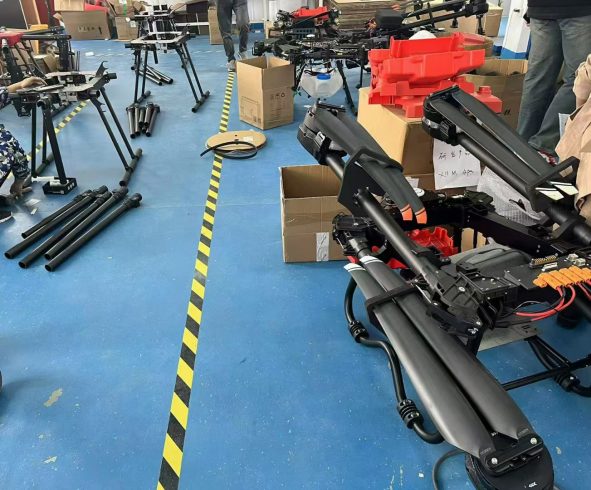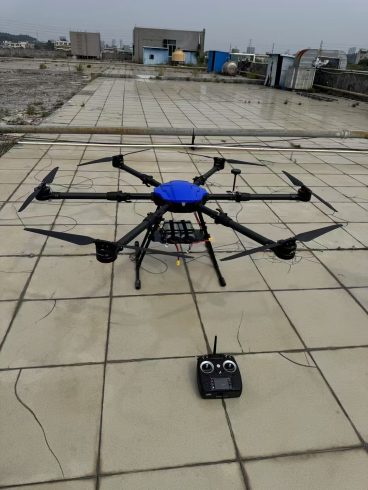![图片[1]-Drone Spraying in Hilly Terrain: Precision Agriculture Meets Challenging Landscapes-msoen](https://www.msoen.com/wp-content/uploads/2025/04/1a54c78d8d214952-576x1024.jpg)
![图片[2]-Drone Spraying in Hilly Terrain: Precision Agriculture Meets Challenging Landscapes-msoen](https://www.msoen.com/wp-content/uploads/2025/04/0e151c96c1214759-768x1024.jpg)
![图片[3]-Drone Spraying in Hilly Terrain: Precision Agriculture Meets Challenging Landscapes-msoen](https://www.msoen.com/wp-content/uploads/2025/04/4e0da2d332214638-768x1024.jpg)
Farming in hilly or mountainous regions has always been a test of ingenuity. Steep slopes, fragmented plots, and unpredictable weather make traditional crop management methods—like tractor-based spraying—inefficient, unsafe, and environmentally risky. Enter agricultural drones: versatile, agile, and capable of delivering precision spraying even in the most rugged terrains. This article explores how drone technology is transforming crop care in hilly areas, offering farmers a smarter, safer, and more sustainable alternative.
Why Hilly Terrain Demands Advanced Spraying Solutions
Hilly landscapes pose unique challenges for farmers:
- Slope-Induced Runoff: Chemicals applied manually or via ground equipment often wash downhill, wasting resources and contaminating soil.
- Inaccessibility: Steep gradients and rocky outcrops limit machinery access, leaving sections untreated.
- Microclimate Variability: Elevation changes create pockets of humidity, temperature, and pest activity, requiring localized treatment.
- Soil Erosion Risk: Over-spraying or improper techniques can accelerate erosion on unstable slopes.
Agricultural drones overcome these hurdles by combining aerial mobility with data-driven precision.
Challenges of Drone Spraying in Hilly Areas
While drones excel in tough terrain, they face specific challenges:
- Wind Turbulence and Stability
Mountainous regions often experience sudden wind gusts and turbulent airflow, disrupting drone flight paths and spray accuracy. - Battery Drain on Sloped Flights
Frequent altitude adjustments and ascents/descents consume more power, reducing operational time. - Obstacle Navigation
Trees, rocks, and abrupt elevation changes require advanced obstacle detection to avoid collisions. - Uneven Spray Distribution
Maintaining consistent droplet coverage across slopes is difficult, risking under-dosing uphill or over-saturation downhill.
How Modern Spraying Drones Tackle Hilly Terrain
- Terrain-Following Technology
Advanced drones use LiDAR or radar to map elevation changes in real time. They automatically adjust altitude to maintain a consistent spraying height (e.g., 2–3 meters above crops), ensuring uniform chemical distribution even on steep gradients. - Wind-Resistant Design
- Hexacopter/Octocopter Models: Drones with 6–8 rotors provide superior stability in gusty conditions.
- AI-Powered Stabilization: Gyroscopes and inertial measurement units (IMUs) counteract sudden wind shifts.
- Smart Spray Systems
- Variable Rate Control (VRC): Adjusts droplet size and flow rate based on slope angle and vegetation density.
- 3D Mapping: Pre-flight scans identify “problem zones” (e.g., pest hotspots) for targeted treatment.
- Extended Flight Endurance
- Hybrid Power Systems: Gasoline-electric hybrids offer longer flight times for large, complex areas.
- Quick-Swap Batteries: Reduce downtime during multi-battery operations.
- Obstacle Avoidance Sensors
360° collision detection systems using ultrasonic sensors, cameras, or infrared allow drones to navigate around trees, poles, and rock formations autonomously.
Benefits of Drone Spraying in Sloped Fields
- Precision Application: Drones apply chemicals only where needed, reducing waste by up to 30% compared to ground methods.
- Zero Soil Compaction: Unlike heavy tractors, drones protect fragile topsoil from erosion and compaction.
- Safety: Eliminate the risk of machinery rollovers or manual spraying on dangerous inclines.
- Speed: Cover 10–15 acres per hour, even in fragmented plots.
- Data-Driven Insights: Post-spray analytics highlight erosion risks, nutrient gaps, or pest outbreaks for proactive management.
Choosing the Right Drone for Hilly Terrain
Key features to prioritize:
- Stability: Opt for multi-rotor drones (6–8 propellers) with high wind resistance ratings (≥15 mph).
- Payload Capacity: 10–20L tanks balance coverage and flight time for mid-sized farms.
- Autonomous Navigation: GPS waypoint planning and return-to-home functions ensure reliability in remote areas.
- Modular Design: Easy-to-clean components and corrosion-resistant materials for harsh environments.
Case Study: Transforming Tea Plantations in Mountainous Regions
A tea farm in East Asia’s highlands adopted drone spraying to manage its 120-acre terraced fields. Challenges included 40-degree slopes, monsoonal rains, and leafhopper infestations. By deploying terrain-following drones with VRC technology, the farm achieved:
- 25% reduction in pesticide costs through precise application.
- 50% faster spraying cycles compared to manual labor.
- Improved crop yield and soil health metrics within two growing seasons.
Future Innovations for Mountain Agriculture
- Swarm Technology: Fleets of drones working in unison to cover vast, uneven terrains.
- Solar-Powered Charging Stations: Enable continuous operations in off-grid areas.
- Seed-Spraying Combos: Drones that simultaneously apply herbicides and reseed erosion-prone slopes.
- Predictive AI: Algorithms that forecast wind patterns and pest movements to optimize spray schedules.
Conclusion
Drone spraying in hilly terrain is no longer a niche application—it’s a necessity for sustainable, efficient agriculture in challenging landscapes. By marrying precision technology with aerial agility, drones empower farmers to conquer slopes, reduce environmental impact, and boost productivity. While obstacles like battery life and wind sensitivity remain, rapid advancements in AI, energy systems, and materials science promise even greater capabilities.
For farmers cultivating sloped or mountainous land, adopting drone technology isn’t just an upgrade—it’s a strategic investment in the future of resilient, high-yield agriculture.











暂无评论内容